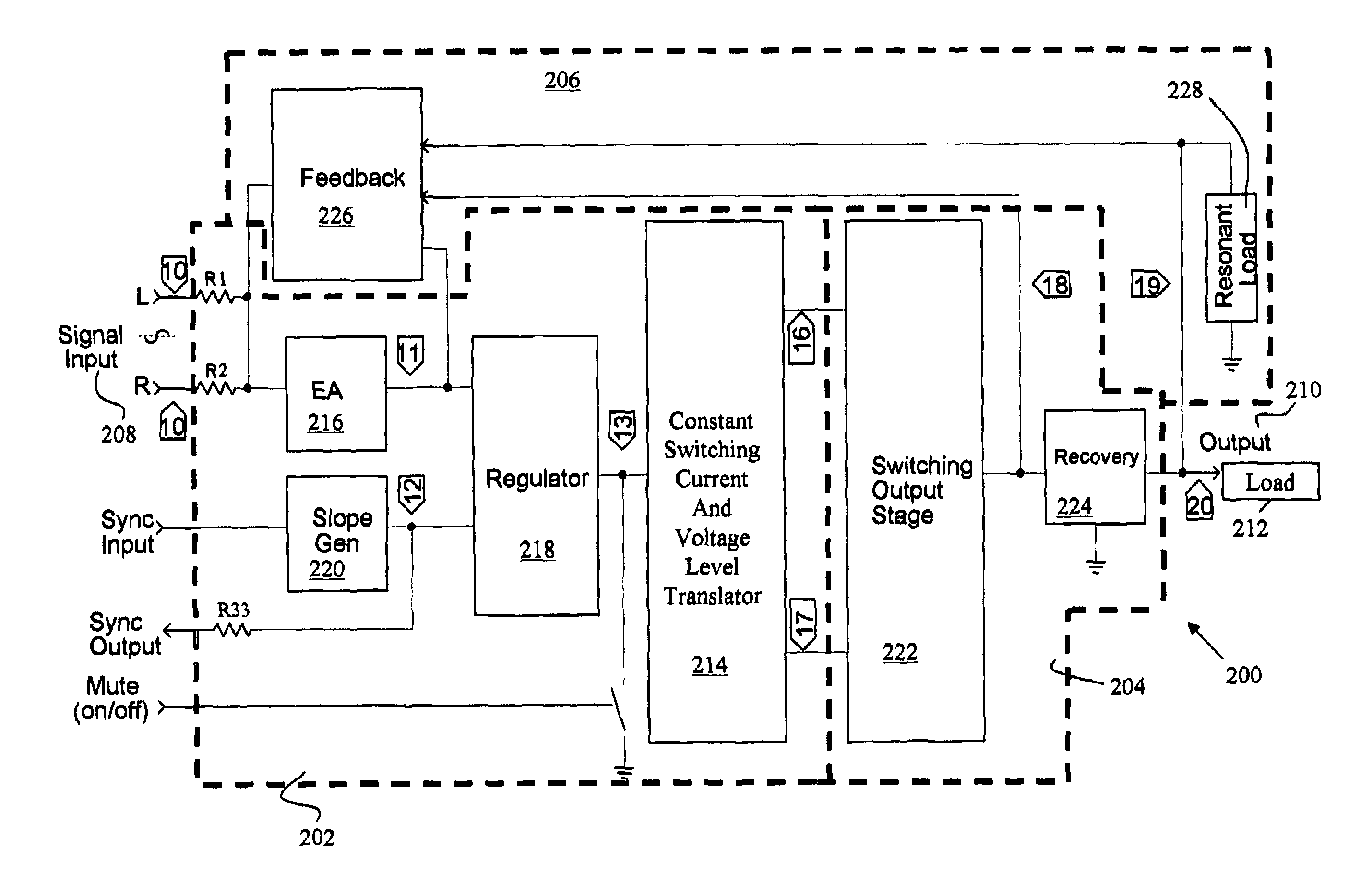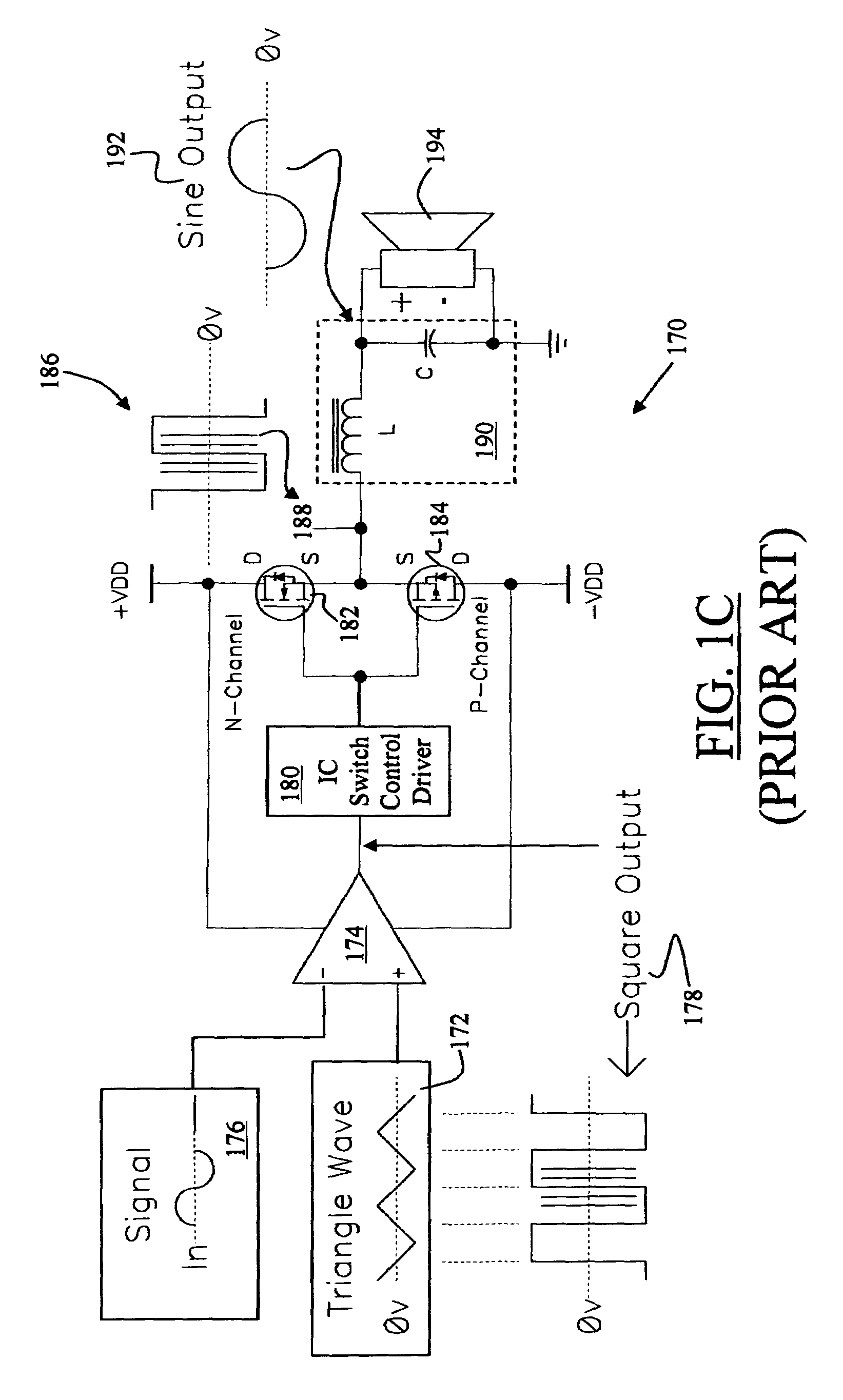Switching power amplifier
a power amplifier and switch technology, applied in the direction of amplifiers with semiconductor devices/discharge tubes, dc amplifiers with modulator-demodulator, etc., can solve the problems of large heat, inefficient power usage, and inefficient class a amplifiers in terms of power usage, so as to maintain the overall signal gain and avoid oscillation
- Summary
- Abstract
- Description
- Claims
- Application Information
AI Technical Summary
Benefits of technology
Problems solved by technology
Method used
Image
Examples
Embodiment Construction
[0117]The detailed description set forth below in connection with the appended drawings is intended as a description of presently preferred embodiments of the invention and is not intended to represent the only forms in which the present invention may be constructed and or utilized.
[0118]FIG. 2A is an exemplary simplified schematic block diagram illustration of a switching power amplifier 200 in accordance with the present invention, and FIGS. 3(A) to 3(N) are exemplary waveform diagrams illustrating the various waveforms at particular points in the circuits of FIGS. 2A to 2C, and FIGS. 4 to 11. As illustrated, the present invention discloses a switching power amplifier 200 that produces a linearly amplified replica of an input signal, provides the advantages and the functionality of a class D amplifier, but without the problems in relation to complex circuit topography and proprietary aspect related to the class D amplifiers, and does not require a regulated power supply.
[0119]As i...
PUM
 Login to View More
Login to View More Abstract
Description
Claims
Application Information
 Login to View More
Login to View More - R&D
- Intellectual Property
- Life Sciences
- Materials
- Tech Scout
- Unparalleled Data Quality
- Higher Quality Content
- 60% Fewer Hallucinations
Browse by: Latest US Patents, China's latest patents, Technical Efficacy Thesaurus, Application Domain, Technology Topic, Popular Technical Reports.
© 2025 PatSnap. All rights reserved.Legal|Privacy policy|Modern Slavery Act Transparency Statement|Sitemap|About US| Contact US: help@patsnap.com



